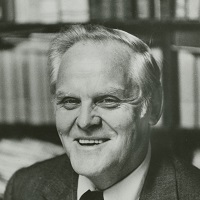
At a rally to help re-elect Texas Sen. Ted Cruz in Houston on October 22, President Donald Trump boastfully proclaimed himself a “nationalist.” He told rally-goers that “radical Democrats” intend to hand over the country to “corrupt power-hungry globalists.” His simplistic definition of globalist was someone who wants the globe to do well at the expense of their own country. He said he prefers to call himself by the “old-fashioned word” nationalist. In the excerpted article below, first printed as part of the book Imperialism Today in 1971, former Communist Party USA leader Gus Hall takes on the concept of nationalism and explains how it is used by the ruling class and imperialism to divide workers who are separated from each other by borders. Hall explains that love of one’s country is not in itself good or bad; rather, it depends on the class content of that love. As an alternative to divisive and racist forms of nationalism, Hall offers working-class internationalism—finding solidarity with other workers no matter where they might be in the world. He proceeds from the Marxist principle that a “union of the working classes of different countries” is necessary to kill war and open the path to social progress.
Working-class internationalism is an essential weapon in the struggle against imperialism. How one reacts to and identifies with the problems of one’s own class is a measurement of class consciousness. How one reacts to these same problems in some other country, or when they affect the lives and struggles on a world scale is a measure of one’s internationalism.
Internationalism is class consciousness that reaches beyond national boundaries. Internationalism correctly sees the oneness of the national self-interests of one’s class and the worldwide nature of the class struggle. Proletarian, or working class, internationalism is not a slogan or a cute phrase that one trots out on ceremonial occasions. It is an ideological concept that must lead to a line of action. It is an outlook that must influence a line of tactics. It is a world outlook of a class and a weapon of struggle. The concept has its roots in the realities of the working class.
Capitalism is worldwide. Class exploitation is worldwide. Monopoly corporations cross state boundaries. The world nature of capitalist exploitation is further developed in the rise of the multinational corporations. More than ever, the class enemy is international.
Without the concept of internationalism, the working class cannot rise above the limits set by narrow nationalism. Without the concept of internationalism, the working class cannot fulfill its historic assignment of leading civilization along the path of social progress.
The working class of each country faces two responsibilities—national and international. How to unite these tasks has always been a challenge to the revolutionary movements. The main weapon of the enemy is a skillful use of chauvinism, nationalism, and a false use of patriotism.
A sense of national pride or a love of one’s country is not necessarily good or bad, positive or negative, in the abstract. The real issue is to what use it is put. What class content does it express? Is it used to advance or retard social progress? Is it a weapon in the hands of the capitalist class or the working class? Does it weaken or strengthen the working class? In a capitalist society, the best self-interests of the people are represented by the working class.
To monopoly capitalism, the people and the nation are objects of exploitation, and nationalism and patriotism are instruments of oppression. National pride with a working-class content, fused with the concept of working-class internationalism, is a progressive force.
Nationalism has its origin in the need to protect the property of the ruling class. It was a method of getting masses to identify their interests with the propertied interests of the ruling class.
In the imperialist countries, this nationalism is turned into great power chauvinism. It becomes the ideological instrument of reaction and imperialism. Under fascism, it becomes the basis for the “master race” concepts. It is always the basis for racism.
Great power chauvinism in its totality is a reactionary outlook. It is the vehicle for the ultra-right and fascism. It is a weapon of oppression. It tends to infect all sections of the population. It is used to brainwash, to confuse, and to mobilize masses for the most reactionary, anti-democratic policies. In the United States, great power chauvinism has grown as a counterpart to and an instrument in the expansion of U.S. imperialism to a world power.
One of the most vicious and deep-seated manifestations of this in the United States is expressed in white chauvinism. It is a deep-seated corrosion, a blind hatred that takes on many forms, from open terror to a condescending, patronizing attitude that betrays an ideology of “superiority.” It is monopoly capitalism’s most effective tool in its policy to divide, rule, and exploit.
National chauvinism and racism are the ideological opposites of working-class internationalism. Therefore, the struggle for internationalism is a rejection and a struggle against all forms of racism and national chauvinism. We cannot develop working-class internationalism among white workers as long as they are influenced by racism toward Black Americans. The struggle for internationalism and the struggle against racism are closely intertwined and inseparable.
Lenin said the following about internationalism in “Tasks of the Proletariat in Our Revolution”:
“There is one, and only one, kind of real internationalism, and that is—working wholeheartedly for the development of the revolutionary movement and the revolutionary struggle in one’s own country, and supporting (by propaganda, sympathy, and material aid) this, and only this line, in every other country without exception.”










